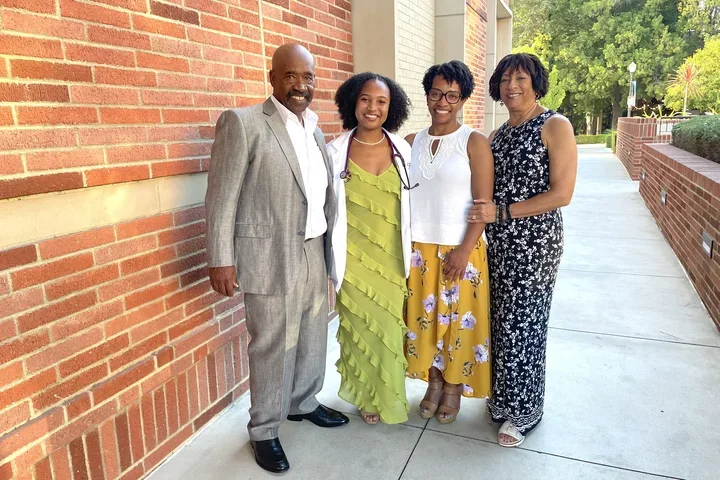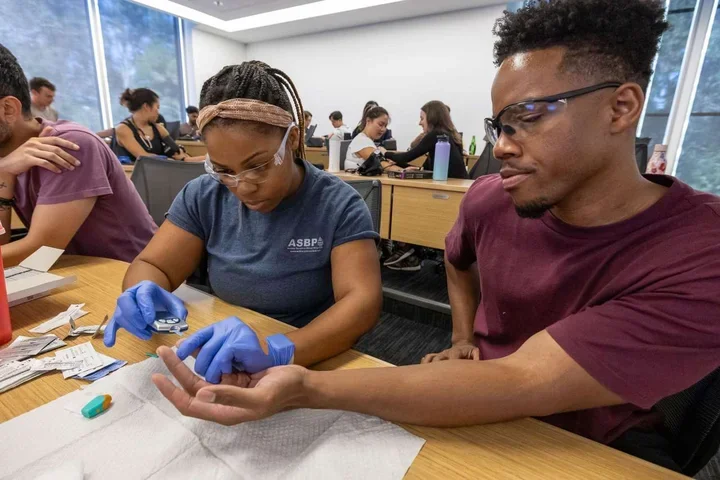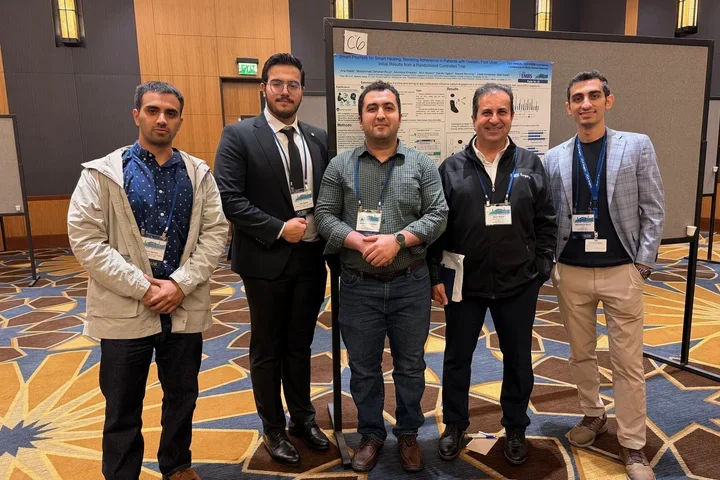PTSD Symptoms, Treatment, and Causes
Medical Expert Interview
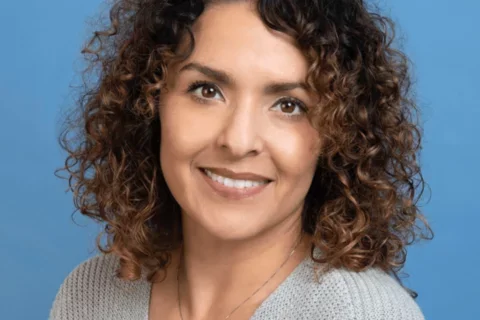
In this article:
Meet Dr. Blanca Orellana
“PTSD happens when someone experiences or witnesses a traumatic event, and as a result, develops a particular set of symptoms,” says UCLA pediatric psychologist and assistant clinical professor Blanca Orellana, PhD, who specializes in treating traumatic stress in children and families.
She became interested in understanding and healing trauma during childhood, when she left her home country, El Salvador, during a time of war. Visiting many years later, she felt the long-term effects of trauma. She yearned to help and eventually became an elementary school teacher in a low socioeconomic status (SES) community.
“My students had experienced significant trauma in various domains,” she remembers. “I found myself struggling to figure out how to help them, and I wanted to do more.”
She saw her chance to try and make a difference by becoming a therapist trained in trauma-informed care. Today, in addition to seeing patients, she teaches, directs clinical training for the UCLA Division of Population Behavioral Health, and helps direct the UCLA Family Stress Trauma and Resilience (STAR) Clinic.
PTSD Meaning: What Is PTSD?
PTSD, or post-traumatic stress disorder, is a diagnosable mental health condition. In popular culture, however, people sometimes use the terms “PTSD” and “trauma” hyperbolically and interchangeably.
Despite this casual usage, PTSD is a mental health condition that should be diagnosed by a professional. It’s characterized by specific criteria and symptoms, which develop after someone experiences a traumatic event.
Is PTSD a Disability?
PTSD isn’t automatically considered a disability, but it can be treated as a disabling condition if an individual’s symptoms impede critical daily functions, such as getting out of bed, leaving the house, or completing work duties. These individuals often need extra support and may qualify to receive disability benefits.
Is PTSD a Mental Illness?
Dr. Orellana says many people label PTSD a “mental illness,” but she prefers calling it a “mental health condition.”
“There’s a lot of stigma around any mental health condition,” she explains. “The term ‘illness’ has a negative connotation. It suggests there’s something ‘wrong.’ The term ‘condition’ simply suggests something’s affecting you.”
Is PTSD an Anxiety Disorder?
The current edition of the Diagnostic and Statistical Manual of Mental Disorders (DSM) no longer categorizes PTSD as an anxiety disorder. Given the condition’s complex presentation, the DSM lists PTSD under a specific category: trauma and stress-related disorders.
However, some PTSD symptoms, such as avoidance, may overlap with those of anxiety disorders.

What Causes PTSD?
Traumatic experiences cause PTSD. Trauma itself, however, is not the same as PTSD and doesn’t always lead to it.
“Not everyone who experiences a traumatic event develops PTSD,” Dr. Orellana explains. “Some people only develop a few of the symptoms. It’s all individual and case by case.”
After a traumatic situation, symptoms lasting under a month are usually called “acute stress disorder.” Symptoms must last more than a month and meet the DSM’s criteria to be considered PTSD.
Some factors put certain individuals at a greater risk of developing PTSD after experiencing trauma.
“Exposure to various types of trauma can put people at increased risk, especially adverse childhood experiences (ACEs),” Dr. Orellana says, explaining that ACEs take a significant mental and physical toll, with symptoms compounding as experiences increase during this crucial time for brain development.
Trauma vs PTSD - What’s the Difference?
Trauma is a negative emotional response to a stressful experience. The DSM does not list trauma alone as a condition with specific symptoms.
PTSD is a diagnosed condition that develops after a stressful experience.
“In terms of symptom presentation, we say trauma is generally a normal response to an abnormal situation,” says Dr. Orellana. “We say it's normal because it aligns with the reaction most people would have if exposed to the same situation.”
What Are Symptoms of PTSD?
A patient may be diagnosed with PTSD if their symptoms align with the following criteria defined by the DSM:
Exposure to a distressing or traumatic event.
"There’s no specific definition for what that event can be. It’s defined by the individual and what they perceive as traumatic. It can be anything—a car accident, a dog attack, sexual assault, and even divorce."
Dr. Orellana says that even witnessing or hearing second-hand about a distressing event can create trauma symptoms.
Re-experiencing the traumatic event.
Re-experiencing tends to be involuntary and can manifest repeatedly as:
- Intrusive and unexpected memories
- Recurrent nightmares about the incident
- Flashbacks
- Distressed reactions in response to cues associated with the event
Avoidance and numbing.
People experiencing PTSD will often avoid talking about the incident. They may also attempt to avoid having memories about the incident by staying away from certain places, people, or situations.
Negative changes in thinking and emotions.
“Many people have an inability to remember important aspects of the traumatic event,” says Dr. Orellana.
People might experience a sense of detachment or estrangement from others, which they often describe as feeling numb. They might have negative ideas or feelings, such as blame, in association with themselves or others.
Hypervigilance.
People experiencing PTSD often demonstrate heightened arousal or reactivity, becoming easily startled. They might have difficulty concentrating or sleeping. They might engage in self destructive behaviors, including drinking, cutting, or driving recklessly.

PTSD Symptoms in Women vs Men
Men and women usually experience similar PTSD symptoms.
“PTSD seems to be more prevalent in women than in men,” says Dr. Orellana. “That’s probably because women often have more exposure to sexual traumas, such as assault and rape.”
Furthermore, Dr. Orellana says the biases and judgments women sometimes face when discussing their trauma may worsen some core PTSD symptoms.
For example, a female victim of sexual assault asked if she had been wearing revealing clothing or consuming alcohol might experience heightened feelings of blame that could make her core trauma more difficult to process.
PTSD Symptoms in Children vs Adults
While the criteria is similar for diagnosing PTSD in children and adults, children’s symptoms present differently.
“The nightmares involved in re-experiencing are a good example,” says Dr. Orellana. “An adult’s nightmares tend to specifically represent the event, but a child’s nightmares might seem more random, such as a recurring dream about being chased—something scary but not specific.”
Children may also re-enact a traumatic event during playtime.
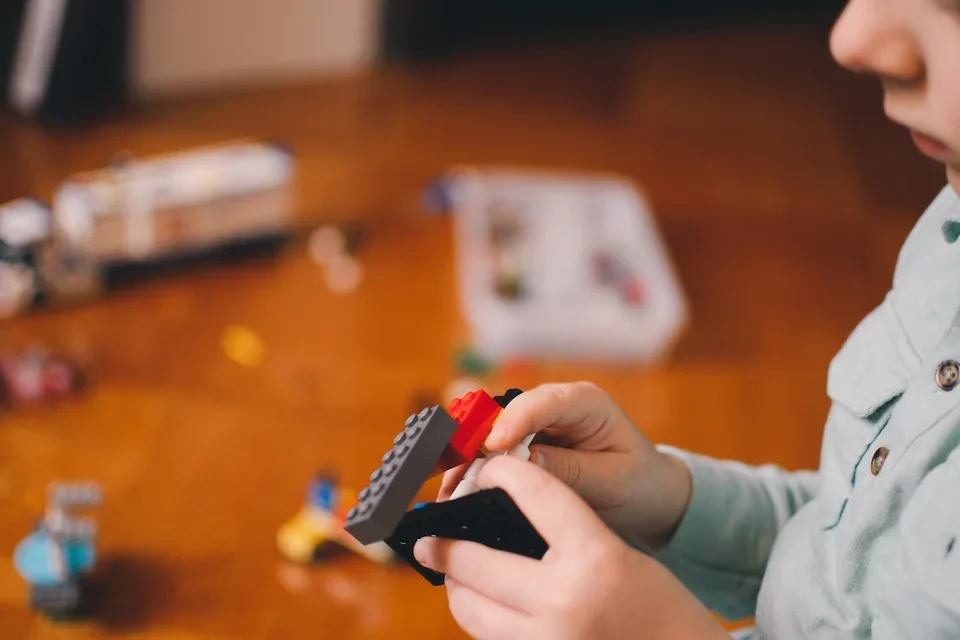
Types of PTSD
Two main types of PTSD are PTSD and complex PTSD (CPTSD).
CPTSD vs PTSD - What’s the Difference?
CPTSD stems from exposure to recurring or prolonged traumas or trauma types that lead to additional, often compounding, symptoms and complications.
“In CPTSD, you often have to address areas other than just the primary trauma.”
Complex PTSD Symptoms
Dr. Orellana explains CPTSD symptoms using two different hypothetical traumatic experiences: Being in a car accident or being sexually abused.
With hope, the trauma caused by a car accident will gradually lessen over time. The trauma caused by sexual abuse, however, may ripple outward over time due to the severe and pervasive nature.
“Abuse survivors may have increased difficulties with self-regulation, which can lead to problems with self-esteem, self-image, and interpersonal relationships.”
How Do You Get a PTSD Diagnosis?
People are diagnosed with PTSD according to DSM 5 criteria by a mental-health professional during a formal evaluation, which includes a clinical interview.
“The clinical interview is critical,” says Dr. Orellana. “Somebody might describe a symptom that isn't part of the diagnostic criteria. Then we have to determine if there might potentially be another condition, depression for example, existing simultaneously with PTSD or that had existed prior to the development of PTSD.”
Dr. Orellana likens the diagnostic aspect of her work to being a private investigator gathering information, chasing leads, and circling back until a clear picture emerges. Due to the complexity and nuance of this process, she does not recommend taking a PTSD test or quiz, or using other online tools in an attempt to self diagnose.
She urges anyone experiencing difficulties as a result of a traumatic experience to seek professional help.

What Is the Treatment for PTSD?
Several evidence-based interventions have been shown to reduce PTSD symptoms. They include:
- Trauma Focused Cognitive Behavioral Therapy (TFCBT)
- Cognitive Processing Therapy (CPT)
- Prolonged Exposure (PE)
- Eye Movement Desensitization and Reprocessing (EMDR)
- Narrative Exposure Therapy (NET)
Therapy for PTSD
Dr. Orellana uses TFCBT with her pediatric patients. It teaches parents strategies to support their child as they learn coping skills, go through the stabilization process, and begin talking about the traumatic experience.
“The idea behind the majority of trauma-focused interventions is helping people process the traumatic event,” Dr. Orellana explains.
Can PTSD Be Cured?
Some type of therapy combined with a psychotropic component is usually the treatment combination most conducive to helping PTSD patients heal.
Using the word “heal” instead of “cure” is important to Dr. Orellana. It underscores that a condition as complex as PTSD leaves lasting changes on an individual.
How Long Does PTSD Last?
The duration of PTSD symptoms depends on the traumatic situation and the individual.
“Some people go through maybe 6 months of treatment and then feel fine. Others take much longer to feel better,” Dr. Orellana says, explaining that it can take someone a long time just to develop enough trust with their therapist to feel safe talking about their most intimate traumas.
For some people experiencing PTSD, the healing process may last a lifetime.
“Individuals can expect things to resurface as they go through various developmental stages,” Dr. Orellana says. “For example, if a child experienced sexual abuse, symptoms and memories may resurface when they begin dating and again when they have their first sexual encounter.”
How to Deal with PTSD?
Seeking help from a mental-health professional is the best way to deal with PTSD.
When it comes to coping with PTSD on an individual level, Dr. Orellana says emotional regulation is particularly useful. When people can identify and label their emotional states, they can better use appropriate coping strategies for different feelings.

PTSD Medication
No currently available medications are known to treat PTSD symptoms specifically. Some people may find medications helpful for treating co-occurring symptoms and conditions, such as depression and anxiety.
How to Help Someone with PTSD?
People can help others going through PTSD by focusing on behaviors within their control, such as how they react to the person they’re hoping to support.
“In terms of providing trauma-informed care, we encourage people to try thinking in terms of ‘what happened to you?’ rather than ‘what's wrong with you?’”
Dr. Orellana says that even just shifting that mindset can help someone be more supportive, empathic, and accepting of someone’s reactivity or symptom presentation.
PTSD Awareness Month
In the spirit of PTSD Awareness Month, Dr. Orellana wants to remind people that there’s help.
“Therapists are here to help. Even though it’s hard to talk about difficult things and people often avoid talking about them, talking is an important part of the healing process.”
She compares the psychological wounds of PTSD to physical wounds. Ignore them and they may get worse, becoming contaminated and infected.
"You have to clean out the wound. You use some alcohol or hydrogen peroxide, and it hurts, but it’s momentary. The cleaning process helps the wound heal. After that, you might still have a little scar, but that's all it is—just a little scar."

Common Misconceptions About PTSD
Dr. Orellana also helped clarify a few common misconceptions about PTSD.
Misconception: PTSD is something that only affects military men.
“Many people think of trauma and PTSD as something mostly affecting men, especially men in the military, because that’s how it’s often represented in television and film.”
In reality, PTSD can affect anyone.
Misconception: PTSD only affects the individual diagnosed with it.
PTSD may actually have significant impacts on families and loved ones.
“Stress reverberates. Even if just one person experienced the traumatic event, the consequences have a ripple effect,” Dr. Orellana says. “We often see parents exhibiting trauma symptoms in response to their child’s trauma.”
Misconception: PTSD can be easily resolved.
Dr. Orellana wants people to know that PTSD is not easily resolved and not resolved in the same time frame or in the same way by any two people, even those who experienced the exact same trauma. It’s not something people can just “get over.”
“Even in group traumas—school shootings for example—each survivor’s course of recovery differs.”
Misconception: All therapists are equally capable of treating PTSD.
The best hope for healing from PTSD comes from working with a mental-health professional experienced in trauma.
Dr. Orellana advises people to ask potential therapists specific questions.
“Instead of asking if they work with trauma, say, ‘What are the specific interventions you use for treating trauma?’” she says. “Ask them to talk about their approach in working with patients who have experienced trauma.”
